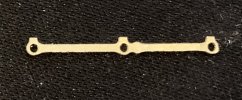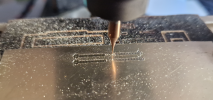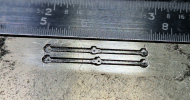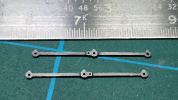Hi Members,,
I have been a member of the 3mm society in the UK since 1973 - am always looking for advice and tricks for super fine scale - am currently using a Genmitsu 3020 cnc machine with a 0.3mm milling cutter working on 0.4mm titanium to try and make finer scale valve gear - am still trying to fine tune my recipe - any advice?
Best, G
I have been a member of the 3mm society in the UK since 1973 - am always looking for advice and tricks for super fine scale - am currently using a Genmitsu 3020 cnc machine with a 0.3mm milling cutter working on 0.4mm titanium to try and make finer scale valve gear - am still trying to fine tune my recipe - any advice?
Best, G

 .
.





